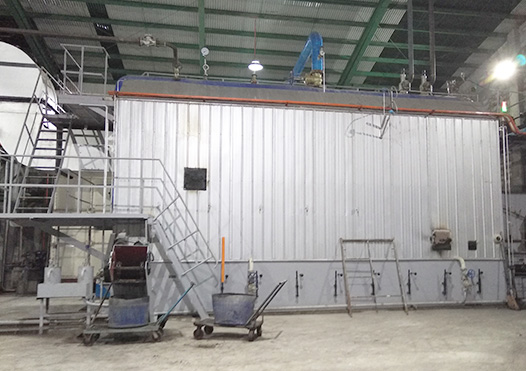Guide: When the boiler system of a pulp and paper mill is making up water, if the make up water contains pollutants, metal corrosion or pollutant precipitation will cause the boiler pipeline and steam system to malfunction, which directly affects the safe operation of the boiler. Even the treated or condensed circulating water may contain certain pollutants. Therefore, it is necessary to solve the problem of boiler make-up water pollution in paper mills. Every pulp mill should take adequate precautions so that potential pollutants can be detected and eliminated as quickly as possible.
When the boiler system of a pulp and paper mill is making up water, if the make up water contains pollutants, metal corrosion or pollutant precipitation will cause the boiler pipeline and steam system to malfunction, which directly affects the safe operation of the boiler. Even the treated or condensed circulating water may contain certain pollutants. Therefore, it is necessary to solve the problem of boiler make-up water pollution in paper mills. Every pulp mill should take adequate precautions so that potential pollutants can be detected and eliminated as quickly as possible.
1. Pollutants caused by quality fluctuations caused by boiler water supply in paper mills
The boiler make-up water in a paper mill may be polluted by many substances, such as acid, corrosive substances (alkali), salt water, wastewater from pulp mills, silica colloid, iron, copper, oxygen, oil, glycol, etc., among which harm The most serious representative substances are acids, corrosive substances (alkali) and black liquor.
When the PH value fluctuates greatly, the surface in contact with the boiler water may produce metal corrosion. If the boiler water is concentrated on the hot metal surface, severe corrosion can occur even in an environment where the pH value fluctuates very little. At the same time, the fluctuation of the pH value is directly related to the acidic or alkaline pollutants contained in the black liquor produced during the production process. When make-up water is used for high-temperature steam cooling and regulation, pollutants can also enter the steam system. Excessively high or low PH values will cause serious corrosion of pipes, heat exchangers and other steam system components.
Generally speaking, the boiler will only produce precipitation after a long time of operation. However, when the boiler is contaminated by iron or copper, the time for precipitation will be shortened. If such pollutants enter the steam system, it will cause serious consequences. .

2. Preventive measures for pollutants that are easy to produce
Theoretically speaking, pollution prevention measures are determined by the system design. When designing water, steam and condensate return systems, effective maintenance measures should be taken into account. Potential pollutants can be classified and appropriate preventive measures can be taken to reduce them. Probability of pollution. The ion exchange system composed of desalination system, softening system and condensing reflux system is very important when taking preventive measures. Some manufacturers believe that the pollution of the re-lifting agent in the desalination system is insignificant, but the consequences are very serious. The desalinated water should enter from the upper part of the traditional downflow regeneration softening system, which can remove the harder in the treated wastewater. Substances and other impurities.
In addition, the design should consider minimizing the pollution of the steam and condensing system. Steam pipes directly used for steam injection, water tank spraying, steam discharge and pipe cleaning should be equipped with at least a simple control valve and backflow prevention equipment.
3. how to detect and control the quality of boiler make-up water
For circulation and condensing systems and boiler make-up water, even if preventive measures have been taken, it is necessary to install an effective detection system. The detection of pollutants is different from the routine inspection of daily equipment wear. In addition to the conductivity monitor, the first peak alarm, and the second peak alarm device, the conductivity monitor of the third peak alarm device should also be installed in an appropriate location. The pollutants of the paper mill mainly depend on the pulping process adopted by the pulp mill. The pulp mill must classify the possible concentrated pollutants and install a monitoring and switching system. In order to control the pollution to a minimum, the operator needs to sample and test the flowing condensate and cooling water every day, and compare the test results with laboratory samples before calibrating; check the tripping of the pump by checking the sensitivity of the probe to the contaminated sample Whether the valve of the device or sewage system can work effectively; clean the probe and calibrate the scale of the instrument every 3-6 months.




























